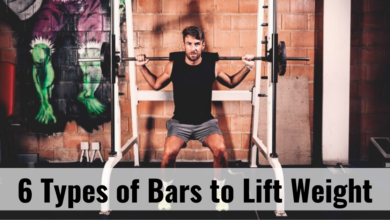Why Do We Feel Pain In Muscles After Vigorous Exercise?

Experiencing muscle pain after engaging in intense physical activity is a common occurrence that many of us can relate to. This post-exercise discomfort, commonly known as delayed onset muscle soreness (DOMS), can range from mild discomfort to severe pain, making even the simplest movements challenging. Understanding why we feel pain in our muscles after vigorous exercise requires delving into the physiological processes taking place within our bodies.
During intense workouts, our muscles undergo microscopic damage, resulting in inflammation. And the release of certain substances that trigger pain receptors. In this article, we will explore the underlying mechanisms behind post-exercise muscle pain. And discuss ways to alleviate and prevent its occurrence.

Understanding Muscle Pain
Muscle pain, also known as myalgia, is a common condition characterized by discomfort or soreness in the muscles. It can be caused by various factors, including overexertion, muscle tension, injuries, infections, certain medical conditions, and feel pain in muscles after vigorous exercise.
Muscle pain can affect any part of the body and range from mild to severe. When muscles are subjected to strenuous activity or excessive strain, small tears can occur in the muscle fibers, leading to pain and inflammation. Muscle pain can also be a symptom of underlying health conditions. Such as fibromyalgia, muscle strains, or viral infections like the flu.
The symptoms of muscle pain can vary from person to person. And may include localized or widespread discomfort, stiffness, weakness, and reduced range of motion. Treatment options for muscle pain typically include rest, applying heat or cold packs, gentle stretching and exercise, over-the-counter pain relievers, and in some cases, physical therapy.
Causes of Muscle Pain After Vigorous Exercise
Feel pain in muscles after vigorous exercise, commonly known as delayed onset muscle soreness (DOMS), is a common occurrence. Several factors contribute to this type of muscle pain. One of the primary causes is microscopic damage to muscle fibers during intense physical activity. When muscles are subjected to unfamiliar or intense exercise, individuals may experience small tears in the muscle fibers, leading to inflammation and pain.
Additionally, the accumulation of metabolic waste products, such as lactic acid, in the muscles can contribute to muscle pain. During strenuous exercise, the body produces lactic acid as a byproduct of anaerobic energy production. This buildup of lactic acid can cause muscle fatigue and discomfort.
Furthermore, the inflammatory response triggered by exercise-induced muscle damage plays a role in muscle pain. The body responds to the muscle damage by releasing inflammatory chemicals. Such as cytokines, which can lead to soreness and stiffness.
The Role of Exercise Intensity and Duration
Exercise intensity and duration play crucial roles in achieving optimal fitness and health benefits. The intensity of exercise refers to the level of effort exerted during physical activity, while the duration refers to the length of time spent engaged in exercise.
The intensity of exercise directly impacts the body’s physiological responses and adaptations. Higher intensity workouts, such as high-intensity interval training (HIIT), can improve cardiovascular fitness, increase metabolism, enhance fat burning, and sometimes lead to feel pain in muscles after vigorous exercise. On the other hand, moderate-intensity exercise, like brisk walking or jogging, promotes endurance, strengthens the heart, aids in weight management, and may cause less muscle soreness.
The duration of exercise determines the total energy expenditure and cumulative physiological effects. Shorter, intense workouts can be effective for time-constrained individuals, as they can provide significant benefits in a shorter period. However, longer duration workouts allow for sustained calorie burn and extended cardiovascular stimulation.

Muscle Soreness After Exercise
Feel pain in muscles after vigorous exercise, known as delayed onset muscle soreness (DOMS), is a common occurrence. It typically manifests as stiffness and discomfort in the muscles, usually 24 to 48 hours after engaging in a new or intense physical activity.
DOMS is believed to be caused by microscopic damage to muscle fibers during exercise, particularly during eccentric movements where the muscle lengthens under tension. This damage triggers an inflammatory response and the release of various chemicals in the body, leading to the sensation of soreness.
Experiencing muscle soreness after vigorous exercise can be uncomfortable, but it’s typically a positive indication of muscle adaptation and strength development. However, there are strategies to alleviate the pain. Incorporating gentle stretching, light exercise, and utilizing heat or cold packs can help reduce soreness. Furthermore, prioritizing adequate rest, hydration, and proper nutrition are vital for optimal muscle recovery.
It’s important to note that muscle soreness should not be confused with acute pain or injury. If the pain is severe, persists for an extended period, or is accompanied by other concerning symptoms, it is advisable to seek medical attention.
Reducing Muscle Pain After Exercise
Reducing muscle pain after exercise is essential for promoting recovery and optimizing performance. Here are some strategies to alleviate post-workout muscle soreness:
- Stretching: Engage in gentle stretching exercises before and after your workout to improve flexibility and prevent muscle tightness.
- Hydration: Drink plenty of water before, during, and after your workout to stay hydrated, which helps reduce muscle cramps and soreness.
- Proper cool-down: Finish your workout with a gradual decrease in intensity, allowing your body to slowly transition from exercise to rest. This can help prevent muscle stiffness.
- Massage: Consider using a foam roller or receiving a sports massage to target tight muscles and increase blood flow, which can help alleviate pain and promote healing.
- Rest and recovery: Allow your body sufficient time to rest and recover between workouts. Adequate sleep and rest days are crucial for repairing and rebuilding muscles.
- Pain-relief measures: Over-the-counter pain medications, such as ibuprofen, can provide temporary relief from muscle soreness. However, it’s important to consult a healthcare professional before using any medication.
Remember, gradual progression and proper form during exercise can also prevent excessive muscle strain and minimize post-workout pain. Listen to your body, and if pain persists or worsens, consult a healthcare professional for further evaluation.
Benefits of Muscle Soreness
Experiencing feel pain in the muscles after vigorous exercise, known as delayed onset muscle soreness (DOMS), is a common occurrence. Although muscle soreness can be uncomfortable, it serves several beneficial purposes for the body.
Firstly, muscle soreness is an indication that your muscles have been challenged and worked to a significant extent. This signals that you’ve pushed your body beyond its usual limits, leading to improvements in muscle strength and endurance over time.
Additionally, muscle soreness promotes muscle growth and hypertrophy. When muscles experience micro-tears during exercise, the body repairs and rebuilds them, resulting in stronger and more resilient muscles. This adaptation process leads to increased muscle mass and improved overall fitness levels.
Furthermore, muscle soreness can enhance proprioception and kinesthetic awareness. The discomfort in the muscles prompts your body to improve coordination and balance, as well as develop a better sense of body positioning and movement.
Lastly, experiencing muscle soreness can also serve as a motivational factor. The feeling of accomplishment and the knowledge that you’ve challenged yourself can boost your confidence and drive, encouraging you to continue exercising and pursuing your fitness goals.
Recovery and Adaptation
Adaptation and Recovery are essential processes that enable individuals, communities, and systems to navigate and thrive in the face of challenges and changes. Recovery refers to the process of regaining strength, stability, and well-being after experiencing a setback or crisis. It involves healing, rebuilding, and restoring what has been lost or damaged. Recovery can take many forms, including physical, emotional, and financial aspects.
Adaptation, on the other hand, involves adjusting and evolving in response to new circumstances or demands. It requires flexibility, resilience, and a willingness to embrace change. Adaptation can occur on individual, societal, and organizational levels, and it often involves learning new skills, adopting new strategies, and reevaluating existing systems and practices.
Both recovery and adaptation are interconnected and complementary. Recovery provides a foundation for adaptation by creating a solid base from which to navigate change, while adaptation allows for continued growth and progress beyond the recovery phase. Together, these processes enable individuals and communities to not only overcome adversity but also thrive in the face of ongoing challenges.

Conclusion
In conclusion, the sensation of muscle pain following vigorous exercise, commonly referred to as delayed onset muscle soreness (DOMS), is a natural physiological response. During intense physical activity, microscopic damage occurs to muscle fibers, leading to inflammation and the release of chemical substances that trigger pain receptors.
The process of repairing and rebuilding damaged muscle tissue is what ultimately strengthens and enhances muscle function. While the exact mechanisms underlying DOMS are still being studied, it is generally understood that this pain serves as a protective mechanism, signaling the need for rest and recovery to prevent further injury and promote muscle adaptation.
FAQs
What happens to muscles during vigorous exercise?
During vigorous exercise, muscles undergo increased blood flow, oxygen delivery, energy production, and muscle fiber recruitment for improved performance.
Why do you get pain in legs after vigorous exercise?
After vigorous exercise, leg pain can occur due to muscle fatigue, micro-tears in the muscle fibers, or lactic acid buildup.
Why does pain after exercise feel good?
The feeling of pain after exercise can feel good because it indicates that you’ve pushed your body and achieved progress.
What happens after vigorous exercise?
After vigorous exercise, the body’s heart rate and breathing slow down, muscles may feel fatigued, and endorphins are released.




operator xyandanxvurulmus.s0hHdPzgjuGR
I do not even know how I ended up here but I thought this post was great I dont know who you are but definitely youre going to a famous blogger if you arent already Cheers
Thank U so much for this encourage.
I do agree with all the ideas you have introduced on your post They are very convincing and will definitely work Still the posts are very short for newbies May just you please prolong them a little from subsequent time Thank you for the post
Thanks for your opinion we will think about its
Wow amazing blog layout How long have you been blogging for you made blogging look easy The overall look of your web site is magnificent as well as the content
Thanks
Hello i think that i saw you visited my weblog so i came to Return the favore Im trying to find things to improve my web siteI suppose its ok to use some of your ideas